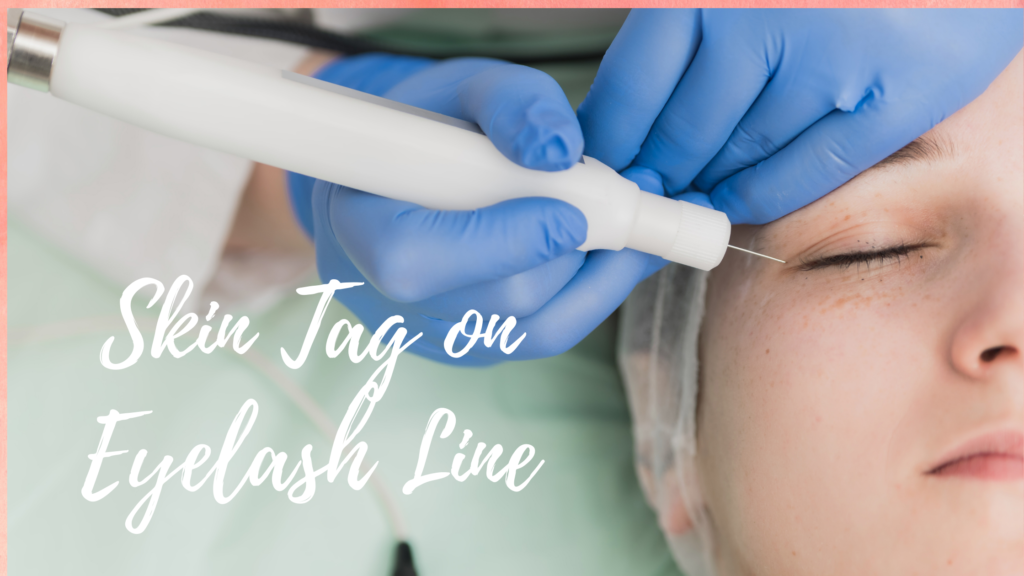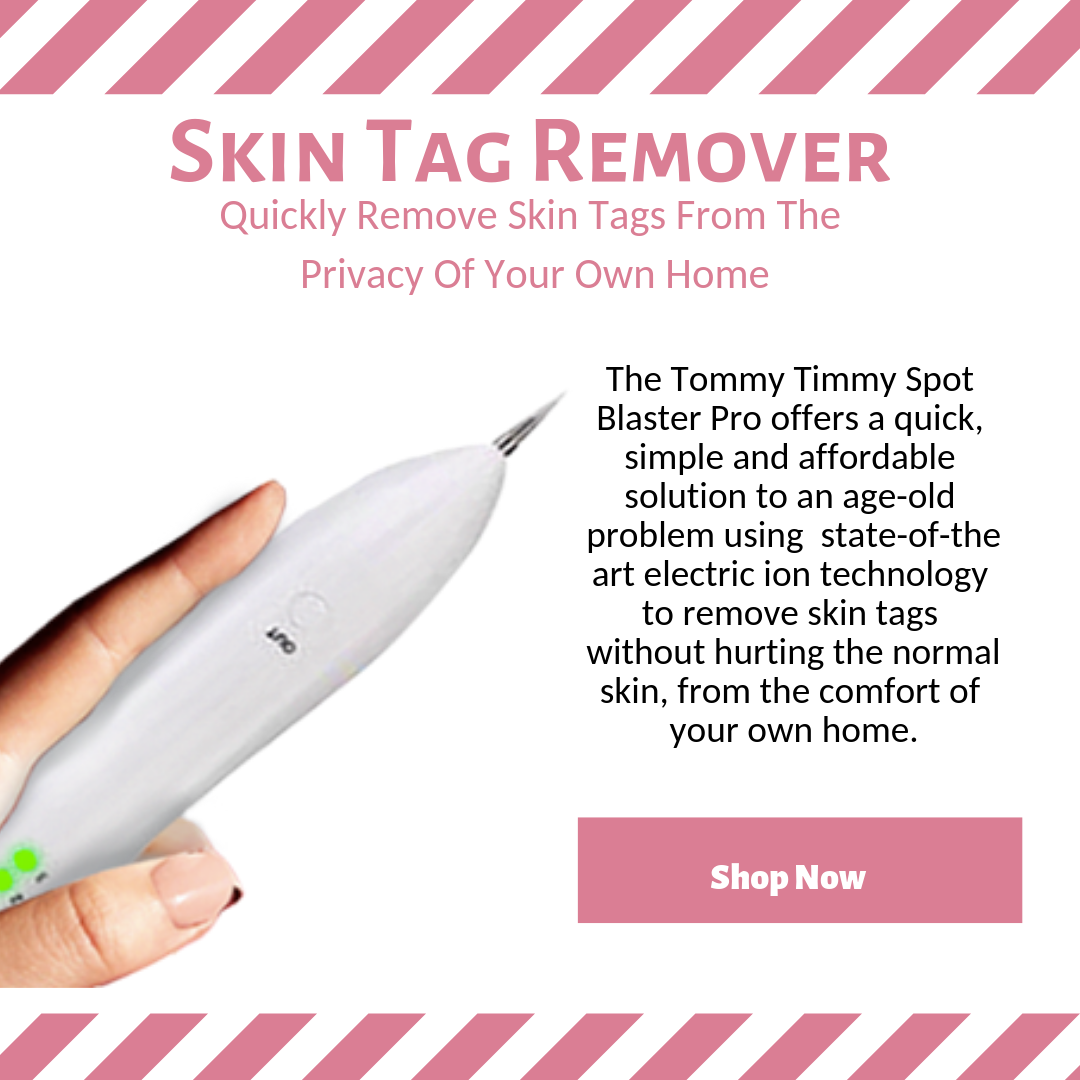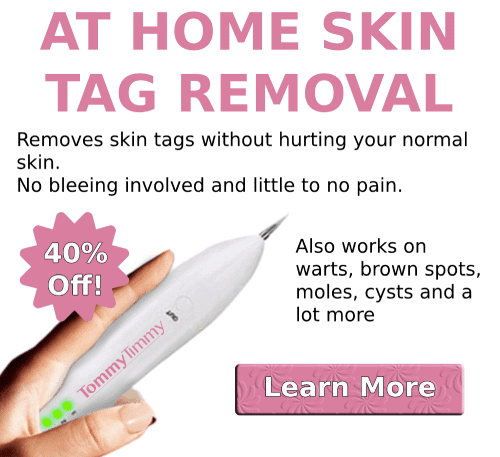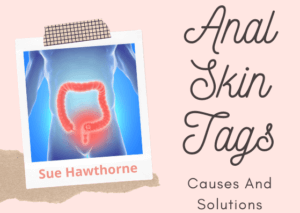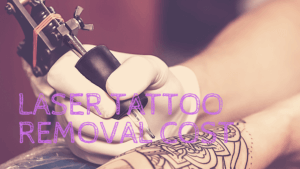Around 25% of the population suffer from skin tags on different parts of their body. They are usually harmless but are esthetically unappealing and can affect self-esteem. If you currently have a skin tag and want to get rid of it or want to know more information about them, this article will give you all of the information you need.
Contents
What Is A Skin Tag?
Skin tags are small growths of skin that form on the surface and hang from a thin stalk. A skin tag can have the same color or be darker than your skin tone. They consist of collagen and blood vessels surrounded by a covering of skin.
Skin tags can appear on different body parts such as the armpits, neck, around genitals, under the breasts, and the anus. Here, we will only focus on the skin tags that grow on the eyelids.
Skin tags in the eyelid aren’t dangerous, and they can’t cause serious health problems or turn cancerous. They are NOT a sign of eyelid cancer or skin cancer. However, they can be annoying, cause discomfort if you rub your eyelid, and affect your appearance.
Fortunately for us, there are several ways for skin tag removal.
What Causes Skin Tags?
A skin tag appears due to excess cell production in the skin, also known as excess skin. These factors can make them more likely to appear:
Genetics: For unknown reasons, some people are more likely to have skin tags than others. So if your parents have them, you are more likely to have them too. So, you can blame your parents!
Friction: it could be skin rubbing against jewelry, clothing, or skin rubbing against other skin. The area around your eyelids, such as the lash line, is commonly affected by friction every time we smile, blink, or look around. It can help if you try and minimize excess skin as it can lead to sensitive skin.
Hormonal fluctuations: A study performed by Iman Budi Putra of the faculty of dermatology from the University Sumatera Utara in Indonesia. It revealed a strong correlation between the levels of leptin, “the satiety hormone,” and skin tags’ appearance. Another connected hormone is estrogen. When the levels of these hormones drop, your skin is more prone to developing skin tags.
Pregnancy: As discussed above, any situation that causes hormonal fluctuations (such as pregnancy) can cause skin tags. The good thing is that it tends to disappear after the pregnancy period.
Obesity: Weight gain can increase skin friction amongst skin folds and also cause hormonal imbalances.
Insulin resistance and diabetes type 2: The consultant endocrinologist Dr. Mark Vanderpump states that skin tags could be an early sign of diabetes type 2 or insulin resistance. Hence, if you notice that you have too many skin tags on your eyelash line, it is best to consult a doctor.
Steroids: The illegal use of steroids can result in skin tags’ appearance in your eyelash line.
Aging: As we age, our skin gets thinner, especially around our eyes, making it more susceptible to changes such as skin tags. The skin becomes weaker and less elastic, and the skin starts to produce more oil. Due to these changes, skin tags affect older adults more.
Papillomavirus: A skin tag on the eyelid can appear due to viral infections.
Identifying A Skin Tag
There are different types of bumps, such as seborrheic keratosis, that can appear on your upper eyelid or lower eyelid. It may be a challenge to know when you have a skin tag, but here are some key factors to consider:
- Usually, a skin tag on the eye will have a small size, no more than 5 mm.
- They are not contagious like a wart.
- You can pinch or apply pressure to them, and they won’t hurt.
- Skin tags feel smooth and soft, just like the skin around them. You may notice some changes in textures if they become irritated. It could be painful to have this skin growth.
- They are peduncular, and they form on the eyelash line on a narrow stalk.
Treatment And Skin Tag Removal Options
The eyelid is such a delicate area and easily exposed to others. Your eyes are the first thing people notice most of the time, so a skin tag can easily affect your appearance.
Sometimes the skin tags will fall on their own, but other times they can become irritated or even grow too large, which will obscure your vision. This will require treatment for your eyelid. But don’t worry, here are the best ways to get rid of skin tags without serious surgery:
Home Remedies
Some people claim that apple cider vinegar and tea tree oil help skin tag removal. But the effectiveness of this method has never been proven.
Cryotherapy
This procedure uses extreme cold to freeze off the skin tags. The doctor will pinch the patient’s skin with a cotton swab that is soaked in liquid nitrogen to freeze the skin tags. They will fall off within 10 days.
Scissor Excision
The doctor will use a small pair of sterile scissors or a scalpel to cut the small skin tag off your eyelid. It works by cutting the thin stalk that attaches the skin tag to the eyelid. It is the fastest way to get rid of skin tags.
Cauterization
It includes numbing the are and burning off the eyelash line’s skin tags by using a laser device. It is effective, and the burning prevents any bleeding.
Ligation
This procedure works by using a fine string-like material to tie off the skin tag and deprive it of oxygen. It is not often used on the eyelid due to the sensitive area.
How To Prevent Skin Tags In Your Eyelash Line
The eyelash line is the closest to the eyes, so it is important to take care of it and do anything you can to prevent those annoying skin tags from appearing. Although you can’t change your genetics, there are some things you can do to avoid their appearance.
- Keep a healthy weight, practice some exercise, and have a healthy diet. This will also prevent conditions like diabetes type 2.
- If you have PCO’s, insulin resistance, or another condition that affects your hormone balance, consult your doctor.
- Avoid rubbing your eyelids, but be gentle to them.
Final Thoughts
Skin tags in the eyelash line are common and, most of the time, don’t cause any problem. Still, if you have one affecting your self-esteem, causing discomfort, or obscuring your vision, you should go to see a doctor. Many safe and effective treatment options will help you.

